 |
 |
|
 |
Bridge inspectors perform aerial feats to inspect Duluth lift bridge |
 |
 |
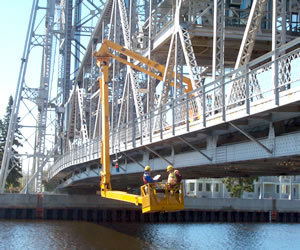 |
|
Bridge inspectors Ken Ran and Jim Flannigan check their findings during the Duluth inspection. Joe Ninefeldt, District 1, operates the boom that allows the inspectors to get close-up views of the structure. Photo by Pete Wilson |
Inspectors from the Bridge Office and District 1 conducted a “fracture-critical” inspection of the city of Duluth's landmark aerial lift bridge on May 31.
The inspectors literally hung out on the bridge with the help of Mn/DOT's snooper and snorkel lift trucks that can reach under and over the bridge’s lift span.
The city of Duluth performs routine annual inspections, but more in-depth inspections are required every five years. Only Mn/DOT has the experts and the equipment to perform such an inspection.
“This is a steel truss bridge with an open grid deck that allows salt and debris to fall onto the superstructure, so corrosion is always a concern,” said Pete Wilson, Bridge Office. “However, we found only minimal paint deterioration and minor corrosion.”
In addition to Wilson, inspectors Ken Ran, Eric Halvorson and Jim Flannigan from the Bridge Office, and Joe Ninefeldt from District 1 combed the bridge for evidence of structural failures or other major problems.
The goal of the inspection was to help assure Duluth citizens that their bridge is still safe to use after 100 years. Completed in 1905, the bridge has undergone many renovations and modifications to accommodate a variety of traffic from pedestrians, wagons, a transfer car that carried pedestrians the length of the bridge, and other vehicles crossing the ship canal to homes and recreational facilities on Park Point.
 |
Duluth's lift bridge has seen a number of renovations and modifications since its creation in 1905. Photo by John Bray |
“This bridge is very well-maintained; it’s in far better condition than most bridges this old,” Wilson said.
By Donna Lindberg
|
back

|
 |
Mn/DOT lacking 2006-07 budget |
 |
 |
The 2006-07 budget for state transportation, along with several other state agencies, remains unfunded. In the absence of legislation specifically appropriating funds for the continuing operations of Mn/DOT, the department will essentially shut down July 1. Expenditures would be very limited, with funding to support only critical life, health and safety functions.
“I know that many Mn/DOT employees are anxious about a government shutdown and recognize that it could cause financial and other stresses,” said Lt. Gov./Commissioner Carol Molnau.
“We are hopeful that the budget can be resolved, but we must plan for the possibility of a shutdown – it would negatively affect our employees, our contractors and citizens who rely on our transportation system.”
A team led by Bob Winter, Mn/DOT director of District Operations, is currently assessing statewide operations, products and services to identify essential functions that must be maintained during a shutdown.
“As we approach the June 30 deadline, we will work to keep Mn/DOT employees informed of progress regarding legislative authorization of a transportation bill. Much remains unknown at this point. We expect that information will be forthcoming via state Web sites, e-mails and news media reports,” said Winter.
Unions representing Mn/DOT and other state employees have reached an agreement with the Department of Employee Relations on employees’ job rights and responsibilities of a shutdown involving parts of state government. The agreement can be found at http://www.afscmemn.org/.
By Jeanne Aamodt
|
back

|
 |
Joint effort emerges as key element in response to tanker spill on I-494 |
 |
 |
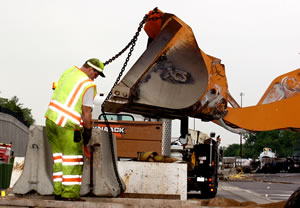 |
|
A Metro District employee guides the placement of a Jersey barrier from the bed of a trailer. Photo by David Gonzalez
|
The tanker spill that closed a section of Interstate 494 in Bloomington on May 25 was the worst of such events and, paradoxically, one of the best.
The spill occurred when a tanker truck carrying 3,500 gallons of an herbicide crashed into the median, overturned and then caught fire. The crash spilled about 500 gallons of the chemical.
On the worst side of the equation was the need to close both sides of the freeway between Hwy 100 and Hwy 169 from 4 a.m. to 11 p.m.
The resulting traffic delay was the longest of its kind experienced by Mn/DOT.
On the plus side were there being no deaths or serious injuries and a cooperative response by several state agencies to divert traffic, clean up the spill, repair the damaged barrier and pavement sections and manage the overall recovery operation.
Gene Lorentz, the Metro District’s Central Region maintenance superintendent, said crews from several truck stations responded along with staff from the Minnesota State Patrol, the Pollution Control Agency, the state Department of Agriculture.
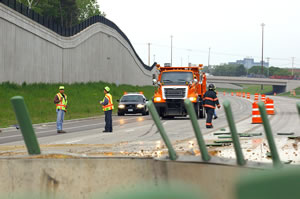 |
Subarea Supervisor Mello Lindberg (center) and other staff from the Cedar Ave truck station await more sand used to collect the spilled chemical. Photo by David Gonzalez |
The Bloomington Fire Department responded to the truck fire.
Metro District crews, he said, repaired the damaged pavement and shoulder as well as the concrete barrier. The crews also assisted the firm that performed the clean-up work.
In addition to the district’s maintenance forces, the Freeway Incident Response Team and the Hazardous Materials Section also supported the overall recovery operation.
“The response to the incident was well-coordinated,” said Sue Mulvihill, Metro District maintenance engineer. “Our people knew what to do and they did it.”
By Craig Wilkins
|
back

|
 |
MnPASS lanes to open to general traffic during non-peak hours |
 |
 |
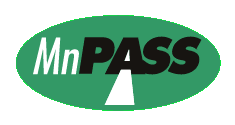 |
|
Lt. Gov./Commissioner Carol Molnau June 8 announced operational improvements to the Interstate 394 MnPASS Express Lanes west of Hwy 100. The changes allow for the lanes to be open to general traffic during non-peak hours of operation. |
The Interstate 394 MnPASS Express Lanes west of Hwy 100 will be opened to general traffic during non-peak hours of operation, with initial openings beginning immediately, Lt. Gov./Commissioner Carol Molnau announced today.
Previously, the I-394 Express Lanes, which opened May 16, were available only to transit, carpools, motorcycles and MnPASS subscribers.
“We have been evaluating operations and listening to the public since the Express Lanes opened three weeks ago,” Molnau said. “The lanes are very popular with MnPASS customers, but operational adjustments clearly are warranted.”
Molnau said the operational improvements will occur in two stages, with the most significant changes taking effect June 9 when westbound I-394 west of Hwy 100 will be open to general traffic from 5:30 a.m. to 2 p.m., Monday through Friday; eastbound I-394 west of Hwy 100 will be open to general traffic from 1 p.m. to 5:30 a.m., Monday through Friday.
Molnau said the second stage of improvements, primarily affecting non-peak travel times, will be implemented during the course of the next three weeks as the MnPASS computer system is reprogrammed.
For more information about the changes, read the June 8 Mn/DOT news release.
|
back

|
 |
Roy accepts Metro District’s North Area manager position |
 |
 |
Chris Roy, now on a mobility assignment in the Office of Land Management, has accepted the position of North Area manager with the Metro District, said Khani Sahebjam, Metro District Program Delivery director.
Roy’s new role as the North Area manager begins June 15. He succeeds Frank Pafko, who now serves as the director of Environmental Services.
Roy will be one of four area managers in the district. As North Area manager, he will be responsible for projects in Anoka and Ramsey counties and northern Hennepin County. His main duties include being an advocate of his areas, maintaining and improving relationships with the local agencies, legislators and transportation coalitions in his region, as well as supporting the district’s interests and goals.
Roy joined Mn/DOT as a student worker at Golden Valley in 1992, later becoming a graduate engineer in District 6/Rochester. Roy then became project manager in the Metro District where he worked on the Interstate 494 corridor. When Roy served as one of the West Area engineers, he managed the Interstate 494 bottleneck removal project, a I-494 design-build project and the I-494/Penn Avenue interchange.
“I am confident that Chris will help continue our success in cultivating relationships and earning trust with Mn/DOT partners, northern Twin Cities Metro area partners and district staff,” Sahebjam said.
By Lisa Yang
|
back

|
 |
Workshop offers technical assistance, encouragement to tribal contractors |
 |
 |
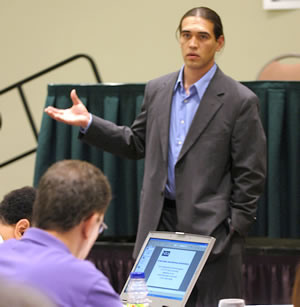 |
|
Karri Plowman, director of the American Indian Chamber of Commerce, makes a presentation during the workshop. Photo by David Gonzalez
|
Fifteen members from Indian tribes in Minnesota met with staff from the offices of Construction and EEO/Contract Management to strengthen their ability to compete for highway contract work.
The workshop was held May 24 in Onamia.
Mn/DOT’s Office of Equal Employment Opportunity and Contract Management and the American Indian Chamber of Commerce sponsored the event.
Staff from other agencies including the federal Small Business Administration, the American Indian Chamber of Commerce and the Native American Business Development Center also led workshop sessions.
Bart Martinez, EEO/Contract Management, said the workshop was designed to provide practical business guidance to tribally based construction firms.
Workshop leaders addressed topics such as marketing, business financing and preparing bids for Mn/DOT projects.
Gary Ericksen, Construction, led a session on Mn/DOT’s project bidding process.
An official from the SBA urged Indian business owners to raise their expectations about the share and kinds of work native tribes could secure with training, planning and goal-setting, said Johnnie Burns of EEO/Contract Management.
Burns conducted a session on the certification and participation processes associated with the Disadvantaged Business Enterprise program.
“The information presented was well-received by the participants,” Burns said. “The workshop sessions were valuable, but the most significant thing we accomplished may have been opening communication among our office, the Office of Construction and the tribes so that tribal business owners are comfortable coming back to us for questions and support,” he said.
“The workshop and the way it improved avenues of communication were very helpful to us all,” Burns said. “We may consider doing such a workshop again.”
By Craig Wilkins
|
back

|
 |
Mn/DOT’s PlantSelector Web site wins stewardship award |
 |
 |
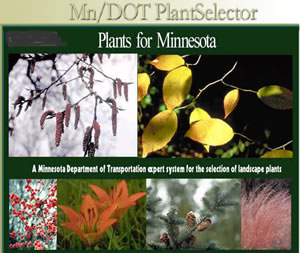 |
|
Todd Carroll, Office of Technical Support, and consultant Michael Max of EnvironMentor Systems, recently received a Stewardship Award from the Minnesota Shade Tree Advisory Committee for developing the PlantSelector Web site. |
Todd Carroll, Office of Technical Support, and consultant Michael Max of EnvironMentor Systems, received a Stewardship Award from the Minnesota Shade Tree Advisory Committee for developing the PlantSelector Web site.
Carroll coordinates the Landscape Partnership Program. Max is associated with EnvironMentor Systems located in Ramsey.
The site helps both professionals and novices to identify and select the most appropriate plants for specific landscape functions, soil types and weather conditions throughout Minnesota.
The PlantSelector system also won an Environmental Excellence Award for research from the Federal Highway Administration in 2002 and several other honors.
Mn/DOT landscape architects and foresters began the research to develop a “right plant for the right place” plant selection system in 1991.
The system has gone through many phases of development since its launch in1995. In 2003, the format was changed from a CD-ROM to a Web site to improve its accessibility to users.
The system correlates 49 distinct fields of information and 159 reference publications. It also contains reviews of more than 650 species of trees, shrubs, vines, grasses and other plants.
“Many other state agencies, professional organizations and private firms are linking to the site from their own Web sites to promote the use of the proper plant materials in their projects,” said Scott Bradley, Landscape Architecture Unit manager.
PlantSelector is available for use at www.plantselector.dot.state.mn.us. Web site users may send comments or questions about the site to Carroll at: plantselector@dot.state.mn.us.
“The program is still a work in progress,” Carroll said. “Converting to a Web-based system allows us to add new information or make changes based on user input.”
By Donna Lindberg
|
back

|
 |
Dakota County transit, social services agency earns national honors |
 |
 |
 |
|
A DARTS driver helps a rider leave one of its transit buses. |
Providing responsive service to its customers while sharing resources with other agencies earned national honors for DARTS, the Dakota Area Resources and Transportation for Seniors transit service based in West St. Paul.
DARTS received the 2005 United We Ride National Leadership Award from U.S. Secretary of Transportation Norman Mineta during the Community Transportation Association of America’s annual meeting May 25 in St. Louis.
The award cited DARTS working cooperatively with Twin Cities area social service agencies to provide transportation and other services to people with disabilities, the elderly and people from low-income families.
In 2004, DARTS provided 165,675 rides while providing services such as vehicle maintenance and scheduling coordination with other agencies in the Twin Cities metropolitan area.
DARTS is supported by a coalition of Dakota County organizations, the city of Farmington, the Volunteers of America, the Metropolitan Council, Hennepin County and the University of Minnesota.
Mn/DOT provides funds for buses that are accessible by people with disabilities operated by private, nonprofit agencies such as DARTS.
Deputy Commissioner Doug Differt serves on the agency’s board of directors.
Donna Allan, Office of Transit director, represented Mn/DOT at the St. Louis meeting.
Mineta presented the awards to DARTS and four other transit systems on behalf of President George W. Bush, 10 Cabinet members and the National Council on Disability. They comprise the Coordinating Council on Access and Mobility. The council seeks ways to better coordinate transit programs while eliminating barriers that can limit access to services.
“This award is the capstone of 30 years of effort to coordinate transit and transit-related services,” said Mark Hossier, DARTS executive vice president. “The award signifies that no matter how small a transit organization, there is a need to simplify operations, reduce costs and improve service.”
By Craig Wilkins
|
back

|
 |
Agreement revoked to create new Hwy 59 welcome center/transit facility
|
 |
 |
Despite a signed memorandum of understanding involving Mn/DOT, the White Earth Band of Ojibwe and Becker County that would have created a welcome center/transit facility near Detroit Lakes, the pact was recently cancelled.
The partners ended the agreement when representatives from the office of U.S. Rep. Colin Peterson and the White Earth Band of Ojibwe decided they could no longer be bound by the agreement’s requirements.
Plans for the proposed welcome center on Hwy 59 in District 4 near Detroit Lakes included a Minnesota Lakes Area welcome center, transit hub, rest area facilities, park and ride lot, tribal museum and a retail outlet for native goods.
The facility would have been jointly owned and managed by the White Earth Band and Mn/DOT and served as a Gateway to the White Earth Reservation.
|
back

|
 |
|
 |



